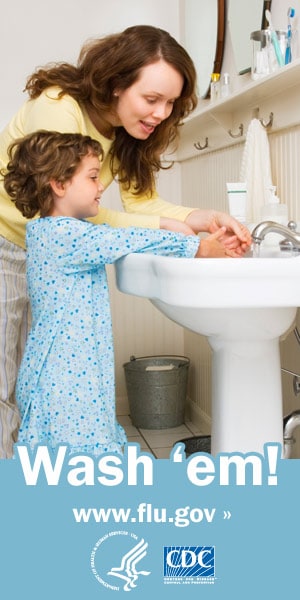April 27, 2009 011:00AM ET copied from the CDC Website
This document provides interim guidance and will be updated as needed.
Detailed background information and recommendations regarding the use of masks and respirators in non-occupational community settings can be found on PandemicFlu.gov in the document Interim Public Health Guidance for the Use of Facemasks and Respirators in Non-Occupational Community Settings during an Influenza Pandemic![]() .
.
Information on the effectiveness of facemasks1 and respirators2 for the control of influenza in community settings is extremely limited. Thus, it is difficult to assess their potential effectiveness in controlling swine influenza A (H1N1) virus transmission in these settings. In the absence of clear scientific data, the interim recommendations below have been developed on the basis of public health judgment and the historical use of facemasks and respirators in other settings.
In areas with confirmed human cases of swine influenza A (H1N1) virus infection, the risk for infection can be reduced through a combination of actions. No single action will provide complete protection, but an approach combining the following steps can help decrease the likelihood of transmission. These actions include frequent handwashing, covering coughs, and having ill persons stay home, except to seek medical care, and minimize contact with others in the household.Additional measures that can limit transmission of a new influenza strain include voluntary home quarantine of members of households with confirmed or probable swine influenza cases, reduction of unnecessary social contacts, and avoidance whenever possible of crowded settings.
When it is absolutely necessary to enter a crowded setting or to have close contact3 with persons who might be ill, the time spent in that setting should be as short as possible. If used correctly, facemasks and respirators may help reduce the risk of getting influenza, but they should be used along with other preventive measures, such as avoiding close contact and maintaining good hand hygiene. A respirator that fits snugly on your face can filter out small particles that can be inhaled around the edges of a facemask, but compared with a facemask it is harder to breathe through a respirator for long periods of time. For more information on facemasks and respirators, visit the CDC H1N1 Flu website..
When crowded settings or close contact with others cannot be avoided, the use of facemasks1 or respirators2 in areas where transmission of swine influenza A (H1N1) virus has been confirmed should be considered as follows:
- Whenever possible, rather than relying on the use of facemasks or respirators, close contact with people who might be ill and being in crowded settings should be avoided.
- Facemasks1 should be considered for use by individuals who enter crowded settings, both to protect their nose and mouth from other people's coughs and to reduce the wearers' likelihood of coughing on others; the time spent in crowded settings should be as short as possible.
- Respirators2 should be considered for use by individuals for whom close contact with an infectious person is unavoidable. This can include selected individuals who must care for a sick person (e.g., family member with a respiratory infection) at home.
These interim recommendations will be revised as new information about the use of facemasks and respirators in the current setting becomes available. For more information about human infection with swine influenza virus, visit the CDC H1N1 Flu website.
1 Unless otherwise specified, the term "facemasks" refers to disposable masks cleared by the U.S. Food and Drug Administration (FDA) for use as medical devices. This includes facemasks labeled as surgical, dental, medical procedure, isolation, or laser masks. Such facemasks have several designs. One type is affixed to the head with two ties, conforms to the face with the aid of a flexible adjustment for the nose bridge, and may be flat/pleated or duck-billed in shape. Another type of facemask is pre-molded, adheres to the head with a single elastic band, and has a flexible adjustment for the nose bridge. A third type is flat/pleated and affixes to the head with ear loops. Facemasks cleared by the FDA for use as medical devices have been determined to have specific levels of protection from penetration of blood and body fluids.
2 Unless otherwise specified, "respirator" refers to an N95 or higher filtering facepiece respirator certified by the U.S. National Institute for Occupational Safety and Health (NIOSH).
3 Three feet has often been used by infection control professionals to define close contact and is based on studies of respiratory infections; however, for practical purposes, this distance may range up to 6 feet. The World Health Organization uses "approximately 1 meter"; the U.S. Occupational Safety and Health Administration uses "within 6 feet." For consistency with these estimates, this document defines close contact as a distance of up to 6 feet.


No comments:
Post a Comment